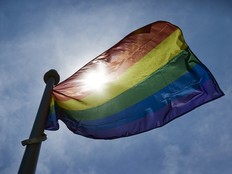Wildfire season 'not slowing down,' emergency management minister says

Article content
OTTAWA — Western provinces and the East Coast should remain on alert for the possibility of more wildfire activity throughout the rest of summer, based on the latest federal government update.
Wide swaths of B.C. and the Prairie provinces are expected to be drier and hotter than normal.
Recommended Videos
Federal government forecasters also see above-average seasonal temperatures for most of the country over the next three months.
Typically in the more northern regions, fire activity starts to wind down around September as cooler weather sets in and the days grow shorter. Not this year.
Federal bureaucrats said there’s a high likelihood that the large fires currently burning will continue well into the fall amid the higher temperatures.
“Wildfire season’s not slowing down,” Emergency Management Minister Eleanor Olszewski said at a virtual press conference in Ottawa on Monday.
“Across the country, it’s been a really hot and dry summer and this has of course contributed to above-normal fire activity with fires in mainly British Columbia, Manitoba, Saskatchewan and more recently in Newfoundland and Labrador, New Brunswick and Nova Scotia.”
A heat wave and dry weather in recent weeks have raised alarm about the threat posed by fires in Atlantic Canada, with 21 that are currently burning across areas larger than 1,000 square kilometres in size.
Olszewski said the current wildfire season is Canada’s second worst on record for how much land has burned in total.
Data provided by Public Safety Canada at a technical briefing Monday morning shows 78,000 square kilometres of land burned so far this year, an amount larger than the size of New Brunswick.
It’s the second highest amount on record after 2023, and more than twice the 10-year average.
There are 707 active fires currently burning across the country — 68 of which are considered to be out of control.
Since April, there have been 165 emergency events have affected 134 First Nations communities, resulting in 88 instances where communities had to be evacuated from their homes, according to Indigenous Services Minister Mandy Gull-Masty.
Officials said firefighters and equipment are currently deployed in every province and territory across Canada.
Some 563 firefighters are working to fight back the blazes, including firefighters who came from six different countries: The United States, New Zealand, Australia, Costa Rica, Chile and Mexico.
Over the whole summer, some 1,600 personnel have come from abroad to help deal with the fires, officials said.











Postmedia is committed to maintaining a lively but civil forum for discussion. Please keep comments relevant and respectful. Comments may take up to an hour to appear on the site. You will receive an email if there is a reply to your comment, an update to a thread you follow or if a user you follow comments. Visit our Community Guidelines for more information.